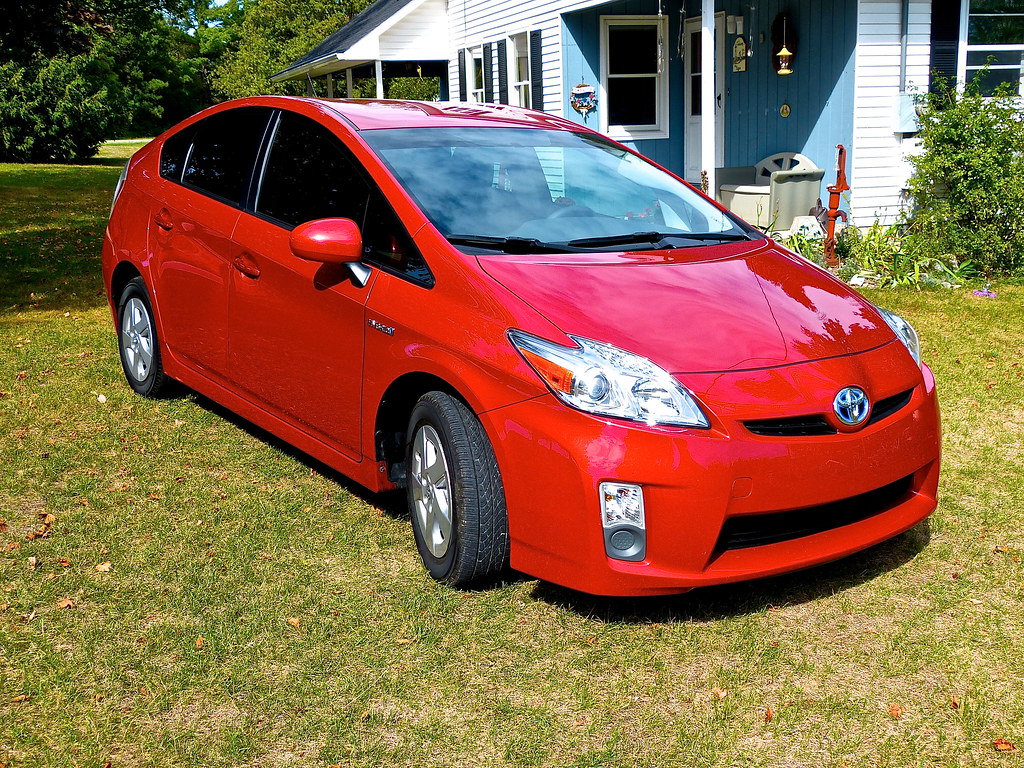If you drive a 2010 Toyota Prius like I do, you probably love the reliability and fuel economy. But like any hybrid, it’s easy to forget about basic maintenance like coolant flushes—until something goes wrong. I made that mistake once, and it ended with an overheating warning during a weekend drive in the mountains. Not fun.

So, when exactly should you flush the radiator on a 2010 Prius? And what does the process look like?
Let me break it down for you.
Why Flushing the Radiator Matters
The radiator in your Prius is responsible for keeping the engine and inverter system cool. Over time, coolant degrades. It gets contaminated with rust, sediment, and old additives that just stop doing their job. A neglected system can lead to reduced fuel efficiency, premature wear, or worse—overheating.

And with a hybrid like the Prius, you’re not just cooling the gas engine. You’re also managing temps for the electric motor and inverter. So, flushing the coolant on schedule is even more important than it is in a regular gas car.
Recommended Flush Interval for 2010 Prius
Toyota’s official maintenance schedule recommends the first coolant flush at 100,000 miles or 10 years, whichever comes first. After that, it’s recommended every 50,000 miles or 5 years.

But here’s the thing: if you live somewhere with extreme heat, or if you’ve bought your Prius used and don’t have clear service records, I’d consider doing it sooner. I personally did mine at 95,000 miles just to be safe.
Also, keep in mind that the 2010 Prius uses two separate cooling systems:
- Engine coolant system (uses Toyota Super Long Life Coolant, pink)
- Inverter coolant system (also uses the same fluid, but has a different reservoir and pump)
Ideally, you want to flush both when the time comes.
Signs It’s Time to Flush Your Radiator
If you’re not sure when it was last done, watch for these clues:

- Coolant looks rusty or brown instead of bright pink
- Overheating warnings, especially on long drives or in hot weather
- You hear the cooling fan running more often than usual
- Your MPG drops with no other clear reason
Any of these signs are a good reason to check your coolant system.
How I Flushed My Prius Radiator
If you’re a DIY type like me, here’s the basic process I followed. (But feel free to have a mechanic do this—especially if you’re dealing with the inverter loop.)

- Let the engine cool completely. Seriously. I once ignored this step and learned the hard way. Burned hands aren’t worth it.
- Drain the old coolant from the radiator drain plug (or the lower radiator hose if needed).
- Remove the reservoir cap to help it flow more easily.
- Flush the system with distilled water if you want to go the extra mile.
- Refill with Toyota Super Long Life Coolant—do not use green or generic coolant. It’s not worth the long-term damage.
- Bleed the air out of the system (run the car with the heater on high and monitor fluid levels).
- Repeat for the inverter loop, using the correct reservoir and coolant lines.
The trickiest part is getting all the air out. I used a spill-free funnel kit and let the engine run with the heater on for about 20 minutes while squeezing the upper radiator hose every few minutes.
Professional vs DIY

Doing it yourself costs about $40–$60 in coolant and supplies. A shop might charge $150–$300 depending on whether they flush one or both systems. Honestly, if you’re not comfortable bleeding air from a hybrid system, paying a pro is worth it.
You Might Also Be Interested In:
- Hybrid vs Plug-In Hybrid Explained
- Signs You Need Fresh Transmission Fluid in a Honda CR-V
- Top Car Maintenance Tips for Summer
FAQs
Q: Can I use regular coolant in a Prius?
A: No. Always use Toyota Super Long Life Coolant (SLLC). Generic or green coolants can damage your hybrid’s cooling system.
Q: What happens if I don’t flush the radiator?
A: You risk overheating, poor fuel economy, and premature failure of both the engine and hybrid components.
Q: Is there a separate radiator for the inverter on the Prius?
A: There are separate cooling loops for the engine and inverter, but they use the same type of coolant. Both should be flushed on schedule.
Flushing the radiator on a 2010 Prius isn’t just about protecting the engine—it’s about keeping the whole hybrid system healthy. Whether you DIY it or go to a shop, staying on top of your coolant schedule is one of the smartest things you can do to keep your Prius running strong past the 200k mark. I’ve done it, and my MPG and peace of mind both improved after.
Let’s Talk Cars
Have a question? A suggestion? Just want to say hi?
You’re in the right place.
Use the form below to reach out to the AutoSpecs Daily team. We're happy to hear from readers, car lovers, first-time buyers, and anyone who's got something to share.
What can you contact us about?
- Feedback on one of our articles
- Ideas for new topics you'd like us to cover
- Questions about cars, gear, or general auto advice
- Media, partnership, or brand inquiries
- Anything else that's on your mind
We check every message that comes through and do our best to respond within 2 to 3 business days.
We don’t list an email address here to avoid spam, but the contact form is the best and fastest way to reach us.
Thanks for stopping by. We're glad you're here.

